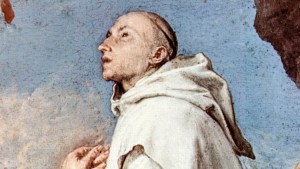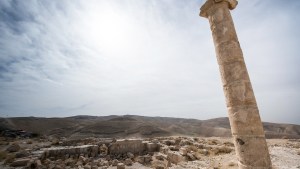In most Christian traditions, St. John the Baptist is also known as the “last prophet of the Old Testament,” the “forerunner of Christ,” or the “glorious prophet.” Typologically related to the prophet Elijah, the Baptist is represented as having wings, presenting him as a divine messenger.
In Greek, evangelos (from which we get the words “angel” and “evangelist”) literally means “good messenger,” or “the bearer of good news.”
But, if this is the case, why aren’t other divine messengers represented with angelic wings? Shouldn’t this apply also to the Apostles and other prophets of the Old Testament? The answer, according to A Reader’s Guide to Orthodox Icons, lies in the Gospels themselves.
In the Gospels of both Luke (7:28) and Matthew (11:11), Christ explicitly says that “among those born of women there is no one greater than John.” A liturgical hymn sung on the feast of the Baptist’s nativity proclaims John is “the culmination and the crown of the prophets.”
As the Catechism explains:
St. John the Baptist is the Lord’s immediate precursor or forerunner, sent to prepare his way. “Prophet of the Most High”, John surpasses all the prophets, of whom he is the last. He inaugurates the Gospel, already from his mother’s womb welcomes the coming of Christ, and rejoices in being “the friend of the bridegroom”, whom he points out as “the Lamb of God, who takes away the sin of the world”. Going before Jesus “in the spirit and power of Elijah”, John bears witness to Christ in his preaching, by his Baptism of conversion, and through his martyrdom.
He is understood as holding a special place among the saints: He is a heavenly man, described as the “Angel of the Desert” (that is, the “messenger” in the wilderness).
The Baptist’s life in the desert, according to tradition, was “angelic” for two main reasons. One of them is quite self-evident: as he proclaimed the coming of the Messiah, he became a messenger of God, a “herald,” just like the angels.
But also, the Baptist is the prototype of monastic life: He lived a life of prayer, abstinence, and chastity, disregarding material needs. This has been often referred to as an “angelic” life, and that’s the reason the Baptist is the patron saint of hermits.



